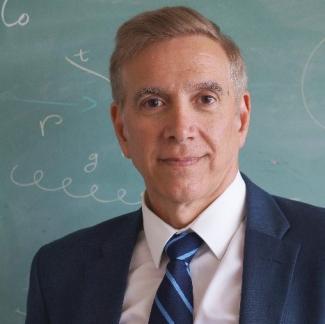
Pat and Joe Yzurdiaga Chair in Experimental Science | Donors: Pat and Joe Yzurdiaga
Yzurdiaga Professor of Experimental Science
http://hep.ucsb.edu/people/incandel/incandel.html
Broida 5105
805-893-3962
Related Links
Biography
Joe Incandela is the Vice Chancellor for Research and the Yzurdiaga Chair in Experimental Sciences.
Professor Incandela’s research has primarily focused on the search for new fundamental particles at high-energy colliders. He is currently a member of the CMS experiment (CERN) and the LDMX light dark matter experiment which is being developed now for operation at Stanford's Accelerator Complex (SLAC). His group is currently working on high granularity calorimeters based on silicon sensors, for both experiments. Prof. Incandela was involved in the discovery of the top quark in 1995, and the first observation of the Higgs boson in 2012
Prof. Incandela is a member of the National Academy of Sciences, American Academy of Arts and Sciences, and a recipient of the Fundamental Physics Prize (Breakthrough Foundation) in 2013.
Research
There is significant evidence for the existence of dark matter in the universe and particle physics has provided some very good candidate particles for dark matter from extensions to the standard model, such as supersymmetry, but so far, there is no conclusive evidence for any of them. This has driven particle physicists to ever higher and lower mass scales. Dr. Incandela's group pursued evidence for dark matter in the TeV mass range on the CMS experiment at the CERN LHC accelerator complex and is preparing to search in the sub-GeV mass range in the context of a hidden dark sector with the LDMX experiment at Stanford's SLAC accelerator complex. In addition, his group is pursuing new information about the Higgs boson by searching for evidence of the coupling of the Higgs boson to charm quarks and for Higgs bosons coupling to one another as evidenced by the appearance of two Higgs bosons in one proton-proton collision.
Selected Publications
S. Chatrchyan et al. [CMS], Observation of a new boson at a mass of 125 GeV with the CMS experiment at the LHC, Phys.Lett. B716: 30-61 (2012)
F. Abe et al.. [CDF], Observation of Top Quark Production in anti-p p Collisions, Phys.Rev.Lett.74:2626-2631,(1995)
T. Akesson et al. [LDMX], A High Efficiency Photon Veto for the Light Dark Matter eXperiment, JHEP 04, 003 (2020) doi:10.1007/JHEP04(2020)003
A. M. Sirunyan et al. [CMS], A search for the standard model Higgs boson decaying to charm quarks," JHEP 03, 131 (2020) doi:10.1007/JHEP03(2020)131
A.M. Sirunyan et al. [CMS] Search for pair production of supersymmetric partners to the tau lepton in proton-proton collisions at √s = 13 TeV, Eur. Phys. J. C 80 no. 3, (2020)189
A. M. Sirunyan et al. [CMS], Search for direct production of supersymmetric partners of the top quark in the all-jets final state in proton-proton collisions at √s=13 TeV. J. High Energ. Phys. 2017, 5 (2017)
A.M. Sirunyan et al. [CMS] Identification of heavy, energetic, hadronically decaying particles using machine-learning techniques, Journal of Instrumentation 15 no. 06, (Jun, 2020) P06005
J. Alitti et al. (UA2 Collaboration) A search for charged Higgs from top quark decay at the CERN
anti-p p collider, Phys.Lett. B280:137-145,1992
J. Alitti et al. (UA2 Collaboration) A precise determination of the W and Z masses at the CERN
anti-p p collider , Phys.Lett. B 241:150-164,1990
J. Incandela, H. Frisch, D. Gustafson, M. Kuchnir, S. Somalwar A flux limit on cosmic ray
magnetic monopoles from a large area induction detector, PRL 53:2067(1984)